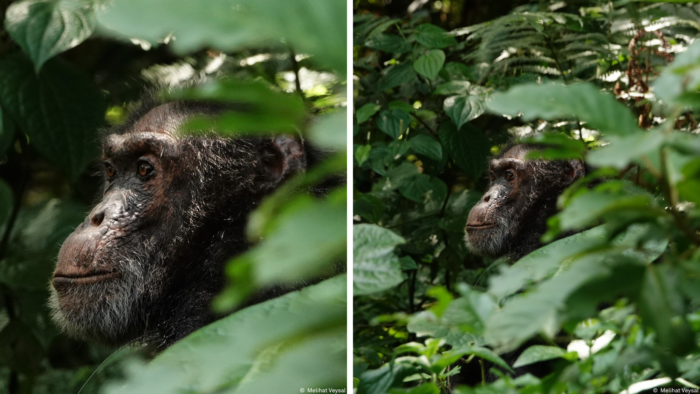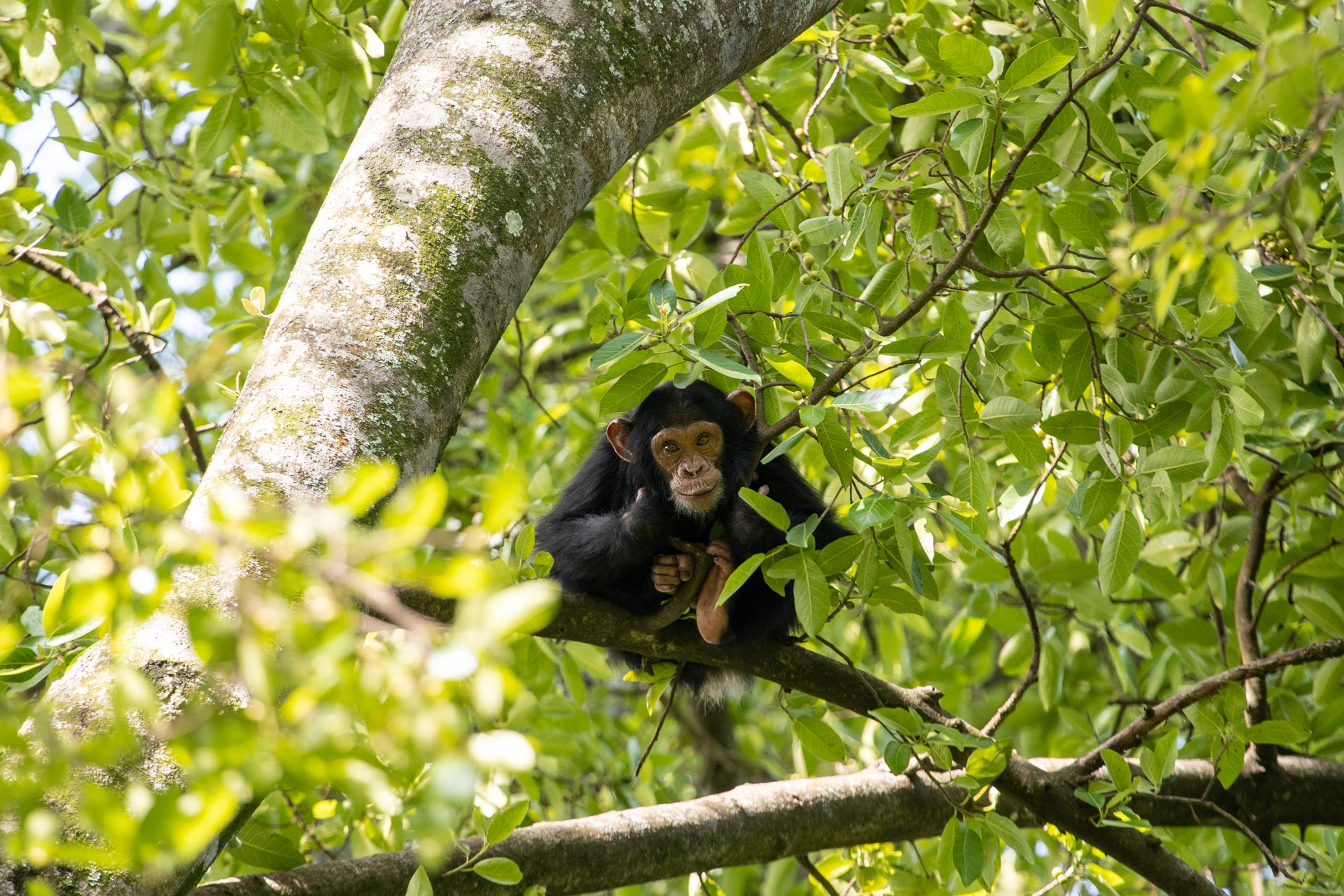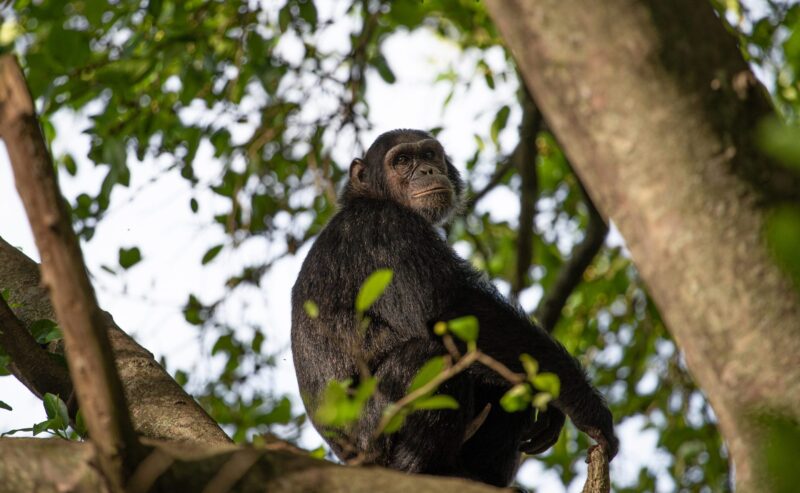Support Gorilla Conservation >

Of all the great apes, chimps are by far the most widespread, and can be found in woodlands and grasslands across more than 20 countries in Western and Central Africa.
The species’ success is largely thanks to its adaptability. Studies have demonstrated the ingenious ways that chimps vary their behavior to tackle food-availability and environmental issues, maximizing their chances of survival.
Despite their intelligence and problem-solving abilities, chimpanzee populations are in decline and the species is classed as endangered by the IUCN. Besides climate change, the biggest threats to their survival – habitat loss, poaching for bushmeat, human-animal conflict and disease – are all direct consequences of human activity and close-proximity to chimpanzees. This makes protected areas where chimps can thrive more important than ever before.


Virunga National Park is a UNESCO world heritage site spanning 3,000 square miles, and chimp populations are present in all three sectors of the Park. In the northern sector, chimps have been observed in the upper and lower Semliki Valley, a remote area that forms part of the Albertine Rift and contains many distinct micro-habitats and varieties of fauna and flora. Although estimates on the number of individuals are unclear, it is thought that the northern population is stable due to the low demographic pressures in the area, with the majority of the Park’s human population residing in more southerly areas.
Recently, a substantial chimpanzee population was observed in the gallery forests (a type of woodland that skirts the paths of rivers and wetlands) of the Ishasha Valley – a transboundary ecosystem of predominantly open savanna that sees migrations of animals via an ecological corridor between the DRC and neighboring Uganda. While it has long been surmised that chimpanzees inhabit this region of the Park’s central sector, the recent deployment of camera traps was able to confirm their presence. Such corroboration allows the Park to strategically plan future chimpanzee conservation in the area.
In the southern sector, chimpanzees reside in the small forest enclave around Rumangabo, as well as the Tongo forests to the west, where the population was once habituated. Due to the prolonged rebel occupation of the Tongo area, it is now too dangerous for Rangers to provide the regular monitoring that was once the norm, meaning the current total population is unknown. Rumangabo, on the other hand, is thought to be home to around 40 individuals, all of which are habituated and benefit from daily monitoring by Park staff.

Adding to the existing areas where chimp communities live, a community forest is in the process of being created near Rumangabo as part of the CLIMA Virunga reforestation drive. Once the planted trees have matured and begin to bear fruit, it is hoped this will provide more space and food sources for chimpanzees and other primate species to exploit. As well as providing habitat for creatures such as chimpanzees, colobus monkeys and blue monkeys, the CLIMA Virunga project helps mitigate against climate change through carbon sequestration.
Virunga’s chimpanzees may represent a relatively small proportion of Africa’s total population, but their conservation and safeguarding by Park Rangers offers a glimmer of hope for our closest cousin. With greater protection elsewhere in Africa, the species’ survival chances could dramatically improve, hopefully one day leading to its removal from the IUCN endangered species list.
Learn More
Learn More
Learn More